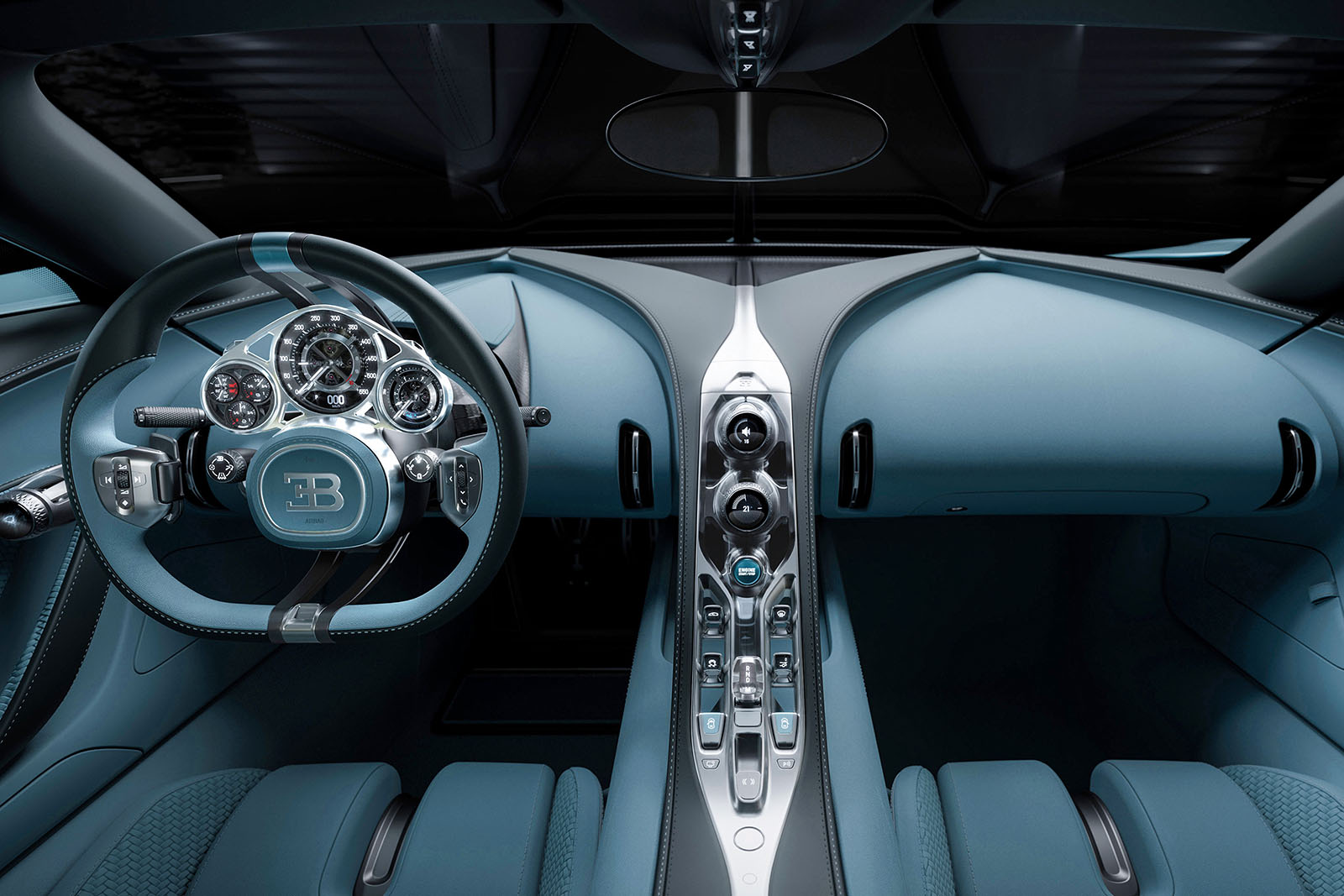Bugatti Taps Watch Movement Maker for Tourbillon Hybrid Supercar
A unique, mechanical instrument cluster.
The Molsheim-based marque just unveiled the successor to its Chiron supercar – and one with a surprising horological connection – the Bugatti Tourbillon. With Croatian auto entrepreneur at Mate Rimac at the helm, Bugatti created a completely new hypercar that features an all-new platform with a naturally-aspirated V16 engine paired with a plug-in hybrid powertrain that together produce a staggering 1,800 hp – matched by a €3.8 million price tag.
The Tourbillon surprised car enthusiasts as it is very much an old-school internal-combustion-engine hypercar, and not merely a rebadged, high-performance electric vehicle of that sort that made Mr Rimac famous. Watch enthusiasts, on the other hand, might be surprised at the horological aspect of the car, which goes beyond the “tourbillon” moniker and harks back to vintage automobiles that sported dashboard instruments by the likes of Jaeger and Kienzle.
The Tourbillon that will be limited to 250 units. Image – Bugatti
Despite the technology contained within the car, Bugatti opted for something almost anachronistic in the cockpit. The brand pays tribute to traditional horological engineering with an analogue, mechanical instrument cluster sitting front and centre on the steering column. The instrument panel is mounted on a fixed-hub steering wheel so it remains in place even as the rim of the steering wheel rotates around it.
The Tourbillon will be delivered starting 2026. Image – Bugatti
Having partnered with Parmigiani Fleurier and then Jacob & Co. to create elaborate mechanical watches in the past, it is perhaps unsurprising that Bugatti turned to Swiss watchmaking for the unique mechanical gauges.
The instrument cluster was developed and constructed by Concepto, the movement manufacturer based in La Chaux-de-Fonds. Amongst its other creations is the Bulgari Octo Finissimo Ultra, as well as several movements for Jacob & Co., including the Chiron Tourbillon wristwatch with a featuring an automaton resembling a miniature engine.
Image – Bugatti
The analogue cluster feels tangibly mechanical, with the open-worked bridges, large jewels, and visible gears being instantly suggestive of classic watchmaking. Importantly, it’s not just a stylistic exercise – the instrument panel is actually fully mechanical.
The fixed-hub steering wheel with the instrument cluster above the central hub. Image – Bugatti
Comprising a speedometer and tachometer on the central register, the instrument panel responds instantly according to Bugatti. As the dual-clutch gearbox upshifts or downshifts, the tachometer needle bounces up or down almost like a retrograde hand.
An adjacent, smaller dial on the right shows the horsepower outputs produced the V16 engine and electric motors respectively; the V16 delivers 1,000 hp while the three electric motors another 800 hp. The twin dials are driven by an intricate assembly of gears and racks that are visible in a computer-generated publicity video released by Bugatti.
The racks and pinions are reminiscent of strikework in a striking watch. Image – Bugatti
Image – Bugatti
Mechanical instruments in automobiles are of course not new. Historically, carmakers turned to watchmakers for onboard instruments. Notable examples include Jaeger gauges found in English cars like Aston Martin and Rolls-Royce and VDO-Kienzle instruments in Mercedes-Benz. And just last year Vacheron Constantin revealed a custom-made Armillary Tourbillon developed for a special-order Rolls-Royce.
Unlike Vacheron Constantin dashboard clock that only tells the time, the Bugatti instrument panel is actually linked to the performance of the car. This complex and thoughtful horological embellishment surely raises the bar for future automotive-horological collaborations.
Back to top.